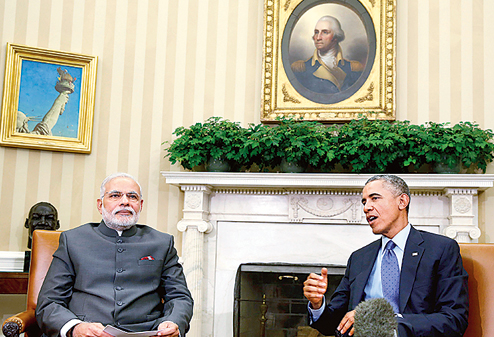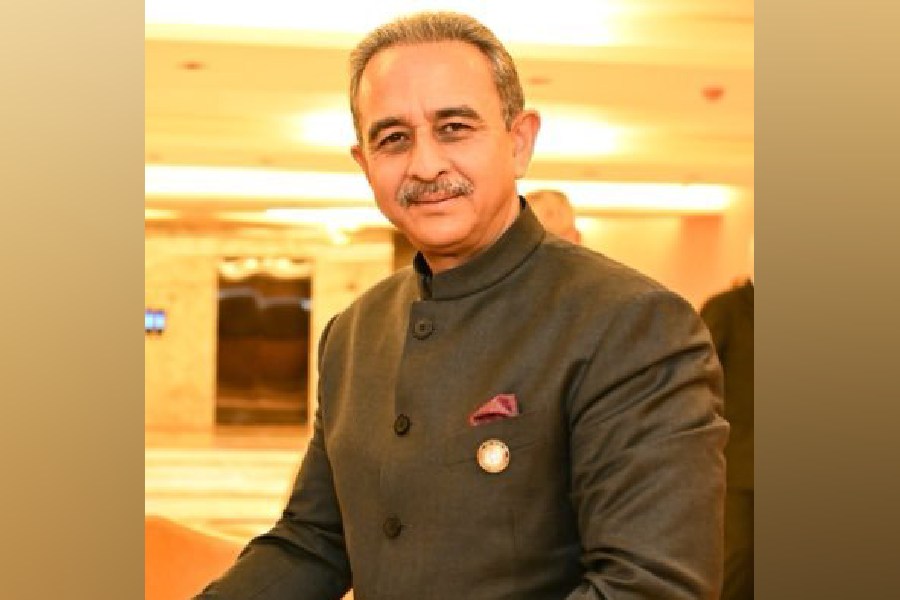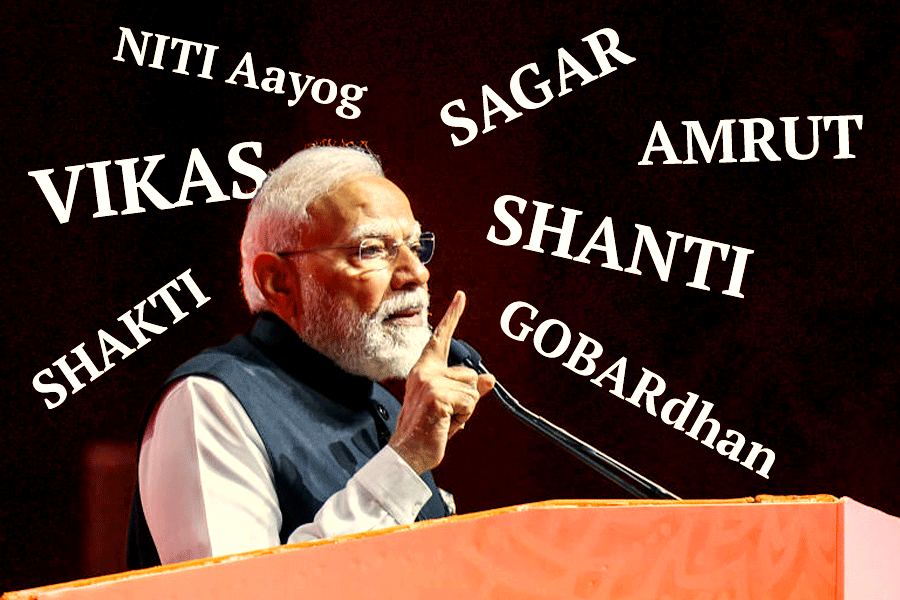
On the eve of his departure from Japan on June 20, 1924, Rabindranath Tagore noted the patience and time its people took "to give beauty to everything that is for daily use". "This," he said, "is the genuine spirit of hospitality. For things that are beautiful are hospitable." I found Japan in January 2018 to be as beautiful and hospitable as Tagore had found it in June nearly a century ago. What can the rest of Asia learn from Japan now that China has emerged as the dominant power in the continent?
Tagore's 1924 voyage had been undertaken in search of "a better understanding between China, Japan and India" and "to preach the fundamental unity of the Asiatic mind". Tagore was quick to explain that he did not consider any quality to be "exclusively oriental". "All great human ideals are universal," he asserted, "only in their grouping, emphasis and expression do they differ from one another." Addressing the faculty and students of Tokyo Imperial University on June 10, 1924, Tagore had made a moving reference to Okakura, from whom he first came to learn that there was such a thing as an "Asiatic mind".
Okakura's 1903 book, The Ideals of the East, had a memorable first sentence: "Asia is one". Sister Nivedita added a further embellishment in her introduction to the book. "Asia, the Great Mother," she wrote, "is for ever One." Asia as a space and a concept in the writings of Asian thinkers contained a creative spark absent in the European cartographic depictions of Asia. The history of a living communication between India and Japan in modern times is best understood in the context of the vicissitudes in realizing the idea of Asia.
A world-historical transformation is under way in the early 21st century as Asia recovers the global position it had lost some two hundred years ago. Yet the idea of Asia and a spirit of Asian universalism were alive and expressed in a variety of registers during the period of European imperial domination. Since the 1880s, Japanese intellectuals had begun to articulate a vision of Asian universalism that found full expression from the turn of the 20th century onwards. Japan's dramatic victory over Russia in 1905 enthused young Asians in China, Vietnam, Indonesia, Philippines, India, Iran and Turkey. Tokyo became a magnet, drawing in a steady stream of Asian students. In April, 1907, young Japanese, Chinese, Indians, Vietnamese and Filipinos formed an Asian Solidarity Group in Tokyo.
Okakura had conveyed the spirit of Asian universalism to India. The Harvard scholar of Japanese art, Ernest Francisco Fenollosa, had inspired him. Okakura would later catalogue Fenollosa's magnificent collection of Japanese and Chinese paintings for the Boston Museum of Fine Arts. Okakura first came to India in December, 1901. Once Nivedita introduced Okakura to the Tagore family in Calcutta, a cultural and political bridge between East and South Asia was forged. Nivedita lauded Okakura for having shown Asia "not as the congeries of geographical fragments that we imagined, but as a united living organism, each part dependent on all the others, the whole breathing a single complex life". Okakura dispatched the famous Japanese artists, Taikan Yokoyama and Shunso Hishida, to Calcutta by early 1903. Abanindranath Tagore learned the Japanese wash technique from Taikan and painted the iconic image, Bharat Mata, in that style. Indian nationalism had come to be fused with Asian universalism. Asia became one expansive venue for the play of a colourful cosmopolitanism for Asian patriots.
On his voyage to Japan in 1916, Tagore had journeyed from Calcutta to Rangoon, Penang, Singapore and Hong Kong. In Hong Kong, Tagore made an uncannily accurate prophecy about the future balance of power in the world. "The nations which now own the world's resources," he contended, "fear the rise of China, and wish to postpone the day of that rise." That long postponed day has now arrived. Does Japan still hold lessons for Asia in the 21st century?
On the economic front, Japan remains an enormously positive example of an Asian model of development. This became clear during my participation in the deliberations of the "Emerging Economies" project of Japan's National Graduate Institute for Policy Studies. Ever since the Meiji era, Japan has been a pioneer of a labour-intensive pattern of industrialization based on concerted efforts to improve the quality of labour through a massive expansion of basic education and skills development. It was a pioneer in the field of rural industries and in its ability to industrialize while promoting inter-regional trade with East and Southeast Asia. Japan's trajectory of rebuilding and retooling after the devastation of World War II was emulated by South Korea, Taiwan, Hong Kong and Singapore. The modes of Japanese manufacturing remain standards of best practices from which India can learn even today.
At the same time, Japan's early 20th-century history is a cautionary tale for any country aspiring to lead an Asian resurgence. Japan's invasion of China in 1937 undermined the idea of Asia as never before. Tagore was dismayed. Writing in the Modern Review, Subhas Chandra Bose recalled that Japan had "done great things for herself and for Asia". But, he lamented, could not Japan's aims be achieved "without Imperialism, without dismembering the Chinese Republic, without humiliating another proud, cultured and ancient race?" "Standing at the threshold of a new era," he wrote, "let India resolve to aspire after national self-fulfilment in every direction - but not at the expense of other nations and not through the bloody path of self-aggrandizement and imperialism."
After the battle of Imphal, Netaji had found one last occasion to give his views on the fundamental problems of India and Asia when he was invited to address the faculty and students at Tokyo University in November 1944. He urged Japan as the sponsor-nation of Asian regionalism to "avoid a selfish and short-sighted policy, and work on a moral basis". That advice can now be legitimately offered to the country that has emerged as the most powerful and assertive in Asia. The dream of an Asian universalism had been shattered in the 20th century by the conflict between Japan and China. Its fate in the 21st century will depend to a very large extent on the ability of China and India to peacefully manage their simultaneous 'rise'.
In the context of today's challenges, Japan shares with India a vision of a multipolar, interconnected and inter-referential Asia. Since his re-election in 2017, the prime minister, Shinzo Abe, has modulated his country's stance towards China's Belt and Road Initiative, setting out conditions of transparency that would enable Japan to participate. Our approach requires a similar nuance as greater inter-Asian connectivity can benefit India enormously so long as we are able to negotiate the right terms. Japan's enduring lesson for the rest of Asia can be found in its blend of the new with the old. The frenetic pace of activity in Ginza and Shinjuku is nicely balanced by the serenity of the Buddhist temples of Nishi Hongan-ji (picture) in Kyoto and Renko-ji in Tokyo. The speed of the Nozumi bullet train racing from Kyoto to Tokyo is stilled by the magical appearance of Mount Fuji on a clear winter morning.
As we re-envision Asia for the Asian century, there is still much to learn from Japan. As Tagore wrote way back in 1932: "We are the people of Asia, grievances against Europe are in our blood. Ever since their pirates and marauders came to suck the blood of this weak continent in the eighteenth century, they have disgraced themselves before us. If a new age has dawned in Asia, let Asia give it utterance in a new authentic voice. If instead Asia merely imitates Europe's beastly cry, were it even to be the lion's roar, it will be a loss."
The author is Gardiner Professor of Oceanic History and Affairs, Harvard University










